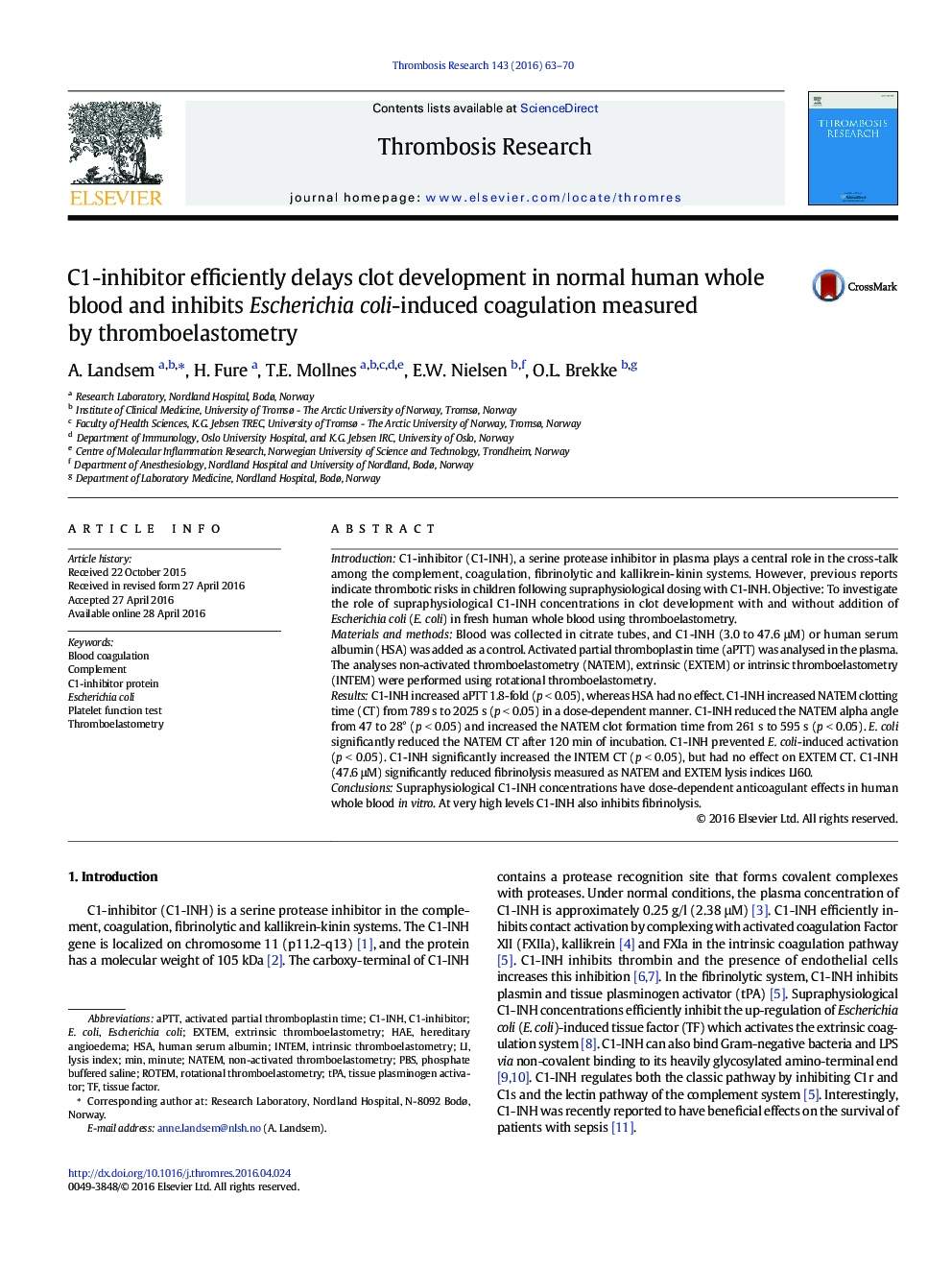| کد مقاله | کد نشریه | سال انتشار | مقاله انگلیسی | نسخه تمام متن |
|---|---|---|---|---|
| 6000414 | 1579200 | 2016 | 8 صفحه PDF | دانلود رایگان |

- C1-INH has anticoagulant effects in human whole blood.
- C1-INH abolished E.coli-induced coagulation measured as NATEM CT.
- C1-INH at very high doses inhibited fibrinolysis analysed using Rotem.
IntroductionC1-inhibitor (C1-INH), a serine protease inhibitor in plasma plays a central role in the cross-talk among the complement, coagulation, fibrinolytic and kallikrein-kinin systems. However, previous reports indicate thrombotic risks in children following supraphysiological dosing with C1-INH. Objective: To investigate the role of supraphysiological C1-INH concentrations in clot development with and without addition of Escherichia coli (E. coli) in fresh human whole blood using thromboelastometry.Materials and methodsBlood was collected in citrate tubes, and C1-INH (3.0 to 47.6 μM) or human serum albumin (HSA) was added as a control. Activated partial thromboplastin time (aPTT) was analysed in the plasma. The analyses non-activated thromboelastometry (NATEM), extrinsic (EXTEM) or intrinsic thromboelastometry (INTEM) were performed using rotational thromboelastometry.ResultsC1-INH increased aPTT 1.8-fold (p < 0.05), whereas HSA had no effect. C1-INH increased NATEM clotting time (CT) from 789 s to 2025 s (p < 0.05) in a dose-dependent manner. C1-INH reduced the NATEM alpha angle from 47 to 28° (p < 0.05) and increased the NATEM clot formation time from 261 s to 595 s (p < 0.05). E. coli significantly reduced the NATEM CT after 120 min of incubation. C1-INH prevented E. coli-induced activation (p < 0.05). C1-INH significantly increased the INTEM CT (p < 0.05), but had no effect on EXTEM CT. C1-INH (47.6 μM) significantly reduced fibrinolysis measured as NATEM and EXTEM lysis indices LI60.ConclusionsSupraphysiological C1-INH concentrations have dose-dependent anticoagulant effects in human whole blood in vitro. At very high levels C1-INH also inhibits fibrinolysis.
Journal: Thrombosis Research - Volume 143, July 2016, Pages 63-70